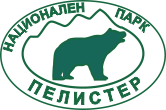Flora


The flora in the National Park Pelister with its wealth, diversity and color is one of the most important values of the biological diversity of this mountain and attracts the interest of researchers, visitors and lovers of the oldest and one of the most beautiful national parks in RN Macedonia.


Pelister flora now numbers 1,307 taxa. The Pelister flora with its richness and diversity has always attracted the attention of researchers. The flora of Pelister and Baba Planina became known to the wider circle of botanists for the first time after the appearance of Grisebach’s pioneering work (1843-44): Spicilegium florae Rumelicae et Bithynicae, which for the first time lists floristic data on the territory of Macedonia. in that context for Pelister as well. Namely, the German botanist Grisebach was the first botanist to visit this mountain (1839) and described several new species for science, including the species Pinus peuce Grisebach (Molika), which is a trademark of Pelister.


In addition to the 2006 Pelister Management Plan, only 1,034 taxon plants were included. Of these, 21 were mosses, to which additional research in 2019 added as many as 273 new species of mosses, which were registered mainly by of the researcher Kimmo Syrjanen. Thus, the flora of NP “Pelister” is now represented by 1307 taxa.
88 species of trees grow on Pelister, which represents 29% of the total dendroflora in Macedonia. Most of the forest areas of Pelister are under noise, and the molasses forests (Pinus peuce Grisebach) here form large and biologically vital populations in the altitude range of 700 – 2200 m and is a floristic trademark for Pelister. Oak forests – 487 ha – are the smallest forest area on Pelister. The rest are mixed forests, such as: Molikovo – fir, Molikovo – beech, Molikovo – beech – fir, beech – fir and beech – oak forests. In the vegetation of Pelister there are 21 plant communities, of which 8 are forest (associations and sub-associations), and 13 are grass communities.


The interest in the flora of this mountain, both in the past and today, is present in many foreign and domestic botanists – florists and phytocenologists. In their works, this botanical treasury is gradually revealed and the knowledge about its flora-vegetation characteristics is constantly supplemented. Besides the higher plants, in the flora of Pelister the most present are the flowering (hidden seeds) plants with over 900 species. Among them, the most dominant are the families Asteraceae (Compositae), Caryophyllaceae, Fabaceae (Leguminosae), Poaceae (Gramineae), Rosaceae, Lamiaceae (Labiatae) and others.




